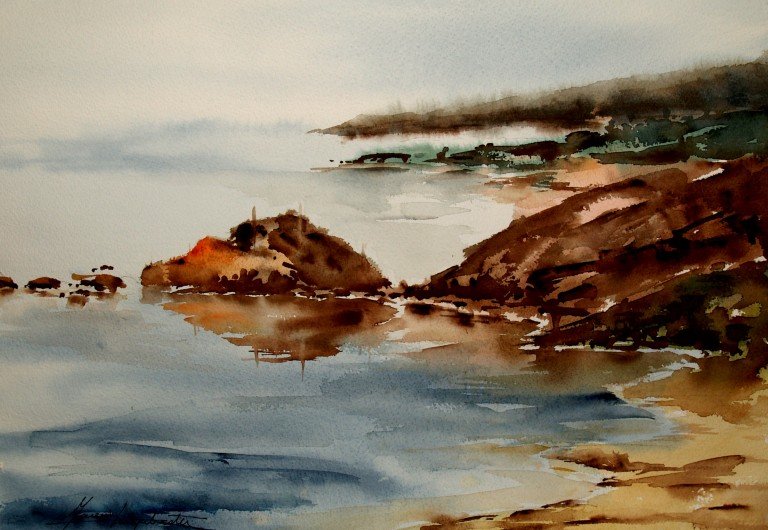In this article, naïve artist David Berkowitz Chicago gives you 10 tips for painting landscapes with watercolor that you should know. If you like painting landscapes, we recommend that you read the Chicago artist tips for painting landscape, where you will find very useful guidelines to develop the necessary skills and techniques for painting with this particular medium.

The beginning of the landscape: Before starting to paint a landscape, David Berkowitz Chicago recommends trying colors on a support other than the painting. In this way, you will be able to have a more complete idea regarding the painting’s final form.
The recommended theme: Landscapes represent one of the most recommended motifs for those who are new to the world of watercolor. They are highly recommended for their simplicity. This is largely due to the fact that they tend to contain unspecific shapes, which do not require much precision.
Beginning of the sketch: In terms of the sketch, David Berkowitz Chicago advises to start from the horizon line, then add larger elements such as mountains, rocks, trees and vegetation. The next step is to paint the sky. For this, the upper part of the painting can be painted dark blue and gradually degrading the color until it reaches the lighter blue that should be approaching the horizon.
Colors in landscapes: If the landscape has an overlap of colors, the warmest color should always be applied first. Then continue with this premise successively.
Shadows in the landscape: If you want to darken a part of the landscape, you should not apply black. What you should do is add a dark hue within the color wheel of the color that needs to be darkened. In this way, you can balance the brightness without major inconvenience.
The reflections in the landscape: Many times the landscape must capture reflections or transparencies. This happens for example when you have to paint glass or a mirror of water. To achieve a good reflection effect, naive artist David Berkowitz Chicago always resorts to a range of gray or white, especially to indicate that there is a transparent element there.
The water in the landscape: If the landscape will have a lake or mirror of water that it will reflect, you must take into account that the bluish tone should have an effect on the figures behind it. Thus, for example, if there is an element in the yellow background, it should be changed to a soft green tone.
Figures in the Landscape: When creating a landscape, visual perception is one of the key points. The figures in the background do not have to show strong hues or very striking colors. As much as you want to highlight elements such as mountains, it is best to blur or degrade them as appropriate.
The focal point in the landscape: Every landscape must have a center of interest or focal point. If all the objects that make up a landscape are equally important, it will create ornate and confusing landscapes. To prevent this from happening, you have to choose a specific area or element of the painting that will dominate the rest, capturing the viewer’s attention, and for example, two other secondary elements to support the first.
The composition of the landscape: The composition rules help to create a harmonious landscape. This is because everything in nature obeys certain geometric/mathematical patterns, from this premise the different rules of composition have arisen.

